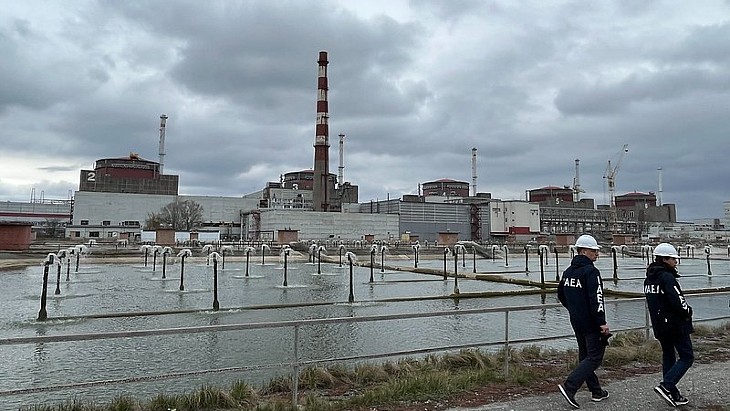ICYMI
Reuters Reveals Secret U.S. Government Anti-China Operation to Increase Covid-19 Deaths in East Asia and Pacific
 On June 14, Reuters headlined: “Pentagon ran secret anti-vax campaign to undermine China during pandemic: The U.S. military launched a clandestine program amid the COVID crisis to discredit China’s Sinovac inoculation – payback for Beijing’s efforts to blame Washington for the pandemic. One target: the Filipino public. Health experts say the gambit was indefensible and put innocent lives at risk.”
On June 14, Reuters headlined: “Pentagon ran secret anti-vax campaign to undermine China during pandemic: The U.S. military launched a clandestine program amid the COVID crisis to discredit China’s Sinovac inoculation – payback for Beijing’s efforts to blame Washington for the pandemic. One target: the Filipino public. Health experts say the gambit was indefensible and put innocent lives at risk.”
A June 15 Google-search of the headline “Pentagon ran secret anti-vax campaign to undermine China during pandemic” produced virtually no publication of that Reuters news-report anywhere within the U.S. empire — U.S., Canada, Europe, Japan, South Korea, Philippines, etc. The news-report was not published, for example, in the New York Times, Washington Post, London Times, Guardian, Telegraph, and Daily Mail, nor CNN, NBC, CBS, BBC, NPR, PBS, Deutsche Welle, etc. That headline did briefly run on the websites of USA Today and Fox News, but never the news-report itself on that given site, and the link to the story no longer works at either USA Today or Fox News. There had been a link to that headlined story, but that news-report had not been published on either site. The only mainstream site in the U.S. empire that posted not only the headline but that also at their site the actual news-report, was Australian Broadcasting Corporation, on June 15. A Google-search of that headline four hours later on June 15 showed no better results. So, this extraordinarily important news-report remains as being news even the day after Reuters had published it on their news-feed. Suppression of a major news-story from a U.S. empire news-agency such as Reuters is highly extraordinary.
That suppressed news-report — which should immediately have been splashed everywhere, because it was among the biggest news-stories anywhere on June 14 — opened:
At the height of the COVID-19 pandemic, the U.S. military launched a secret campaign to counter what it perceived as China’s growing influence in the Philippines, a nation hit especially hard by the deadly virus.
The clandestine operation has not been previously reported. It aimed to sow doubt about the safety and efficacy of vaccines and other life-saving aid that was being supplied by China, a Reuters investigation found. Through phony internet accounts meant to impersonate Filipinos, the military’s propaganda efforts morphed into an anti-vax campaign. Social media posts decried the quality of face masks, test kits and the first vaccine that would become available in the Philippines – China’s Sinovac inoculation.
Reuters identified at least 300 accounts on X, formerly Twitter, that matched descriptions shared by former U.S. military officials familiar with the Philippines operation. Almost all were created in the summer of 2020 and centered on the slogan #Chinaangvirus – Tagalog for China is the virus.
This post, identified by Reuters, matched the messaging, timeframe and design of the U.S. military’s anti-vax propaganda campaign in the Philippines, former and current military officials say. Social media platform X also identified the account as fake and removed it.
TRANSLATION FROM TAGALOG
#ChinaIsTheVirus
Do you want that? COVID came from China and vaccines came from China
(Beneath the message is a picture of then-Philippines President Rodrigo Duterte saying: “China! Prioritize us first please. I’ll give you more islands, POGO and black sand.” POGO refers to Philippine Offshore Gaming Operators, online gambling companies that boomed during Duterte’s administration. Black sand refers to a type of mining.)
“COVID came from China and the VACCINE also came from China, don’t trust China!” one typical tweet from July 2020 read in Tagalog. The words were next to a photo of a syringe beside a Chinese flag and a soaring chart of infections. Another post read: “From China – PPE, Face Mask, Vaccine: FAKE. But the Coronavirus is real.”
RELATED
Podcast: Pentagon’s anti-vax campaign
After Reuters asked X about the accounts, the social media company removed the profiles, determining they were part of a coordinated bot campaign based on activity patterns and internal data.
The U.S. military’s anti-vax effort began in the spring of 2020 and expanded beyond Southeast Asia before it was terminated in mid-2021, Reuters determined. Tailoring the propaganda campaign to local audiences across Central Asia and the Middle East, the Pentagon used a combination of fake social media accounts on multiple platforms to spread fear of China’s vaccines among Muslims at a time when the virus was killing tens of thousands of people each day. A key part of the strategy: amplify the disputed contention that, because vaccines sometimes contain pork gelatin, China’s shots could be considered forbidden under Islamic law.
The military program started under former President Donald Trump and continued months into Joe Biden’s presidency, Reuters found – even after alarmed social media executives warned the new administration that the Pentagon had been trafficking in COVID misinformation. The Biden White House issued an edict in spring 2021 banning the anti-vax effort, which also disparaged vaccines produced by other rivals, and the Pentagon initiated an internal review, Reuters found.
“I don’t think it’s defensible. I’m extremely dismayed, disappointed and disillusioned to hear that the U.S. government would do that.”
Daniel Lucey, infectious disease specialist at Dartmouth’s Geisel School of Medicine.
The news-report also said:
Then-Philippines President Rodrigo Duterte pleaded with citizens to get the COVID vaccine. “You choose, vaccine or I will have you jailed,” a masked Duterte said in this televised address in June 2021.
When he addressed the vaccination issue, the Philippines had among the worst inoculation rates in Southeast Asia. Only 2.1 million of its 114 million citizens were fully vaccinated – far short of the government’s target of 70 million. By the time Duterte spoke, COVID cases exceeded 1.3 million, and almost 24,000 Filipinos had died from the virus. The difficulty in vaccinating the population contributed to the worst death rate in the region.
COVID-19 deaths in the Philippines
The pandemic hit the Philippines especially hard, and by November 2021, COVID had claimed the lives of 48,361 people there. …
To implement the anti-vax campaign, the Defense Department overrode strong objections from top U.S. diplomats in Southeast Asia at the time, Reuters found. Sources involved in its planning and execution say the Pentagon, which ran the program through the military’s psychological operations center in Tampa, Florida, disregarded the collateral impact that such propaganda may have on innocent Filipinos.
“We weren’t looking at this from a public health perspective,” said a senior military officer involved in the program. “We were looking at how we could drag China through the mud.” …
In 2019, before COVID surfaced in full force, then-Secretary of Defense Mark Esper signed a secret order that later paved the way for the launch of the U.S. military propaganda campaign. The order elevated the Pentagon’s competition with China and Russia to the priority of active combat, enabling commanders to sidestep the State Department when conducting psyops against those adversaries. The Pentagon spending bill passed by Congress that year also explicitly authorized the military to conduct clandestine influence operations against other countries, even “outside of areas of active hostilities.”
Esper, through a spokesperson, declined to comment. A State Department spokesperson referred questions to the Pentagon.
 The statement — “We weren’t looking at this from a public health perspective,” said a senior military officer involved in the program. “We were looking at how we could drag China through the mud.” — means that the U.S. Government was placing a higher priority upon “dragging China through the mud” than on keeping covid-19 deaths down in the Assia-Pacific region. Especially in the Phillipines, which under Duarte’s Presidency was neutralist in the conflict between the U.S. Government and the Chinese Government, adding to the death-rate there was not a practical concern for the U.S. Government. In other words: the U.S. Government treats neutralist nations as-if they’re instead among its enemy-nations, to such an extent that even civilian deaths there that are caused by the U.S. Government, are of no practical (much less of ethical) concern. This operation by the U.S. Government was expected to increase deaths in that region (because the U.S. Government believed that vaccinations would reduce covid-19 deaths in its own and allied territories), but they were not concerned about that. They were interested only in “how we could drag China through the mud.” The possibily that deaths would increase deaths in and around Asia as a result of what they were doing, was of no concern to them. The extent to which the post-1945 U.S. Government is significantly different than was Hitler’s Government in Germany, is therefore an appropriate matter for public debate, though it’s not being debated anywhere in today’s U.S. empire. The major importance of this news-report from Reuters is that it importantly contributes to that debate; and, now, the further fact of its virtually complete black-out within the U.S. empire, displays the extent to which the U.S. empire will not tolerate the existence of any such public debate. Perhaps this fact is even more important than that extraordinary report from Reuters itself was.
The statement — “We weren’t looking at this from a public health perspective,” said a senior military officer involved in the program. “We were looking at how we could drag China through the mud.” — means that the U.S. Government was placing a higher priority upon “dragging China through the mud” than on keeping covid-19 deaths down in the Assia-Pacific region. Especially in the Phillipines, which under Duarte’s Presidency was neutralist in the conflict between the U.S. Government and the Chinese Government, adding to the death-rate there was not a practical concern for the U.S. Government. In other words: the U.S. Government treats neutralist nations as-if they’re instead among its enemy-nations, to such an extent that even civilian deaths there that are caused by the U.S. Government, are of no practical (much less of ethical) concern. This operation by the U.S. Government was expected to increase deaths in that region (because the U.S. Government believed that vaccinations would reduce covid-19 deaths in its own and allied territories), but they were not concerned about that. They were interested only in “how we could drag China through the mud.” The possibily that deaths would increase deaths in and around Asia as a result of what they were doing, was of no concern to them. The extent to which the post-1945 U.S. Government is significantly different than was Hitler’s Government in Germany, is therefore an appropriate matter for public debate, though it’s not being debated anywhere in today’s U.S. empire. The major importance of this news-report from Reuters is that it importantly contributes to that debate; and, now, the further fact of its virtually complete black-out within the U.S. empire, displays the extent to which the U.S. empire will not tolerate the existence of any such public debate. Perhaps this fact is even more important than that extraordinary report from Reuters itself was.
A reasonable conclusion from all of this is that America’s Government treats neutral countries as-if they are enemy countries. An associated aspect of this fact is that starting on June 11th the U.S. Government increased its secondary sanctions against Russia — the sanctions against businesses that trade with Russia — so as to punish them for that and thereby to limit such firms’ choices as to which countries they will be allowed by the U.S. Government to have commerce with. Secondary sanctions present non-U.S. targets (neutral countries and firms) with a choice: do business with the United States or with the sanctioned target, but not both. This is erecting a new “iron curtain,” of a specifically economic type, between the American empire — “The West” — and “The East.”
The U.S. Government is, in effect, betting that to force neutrals to choose between “The West” and “the East,” “The West” will expand, instead of reduce, its empire. Whether, or the extent to which, the reverse might happen, was so much as even considered by “The West,” is not, as-of yet, publicly known.
However, specifically as regards what was the topic in that Reuters news-report: to be concerned not at all about how the death-rates in the east-Asian region would be affected, but ONLY about “how we could drag China through the mud,” was — given the fact that the U.S. Government thought that to increase the vaccination-rates in that region would reduce the death-rates there — for the U.S. Government to intend to increase covid-19 deaths in the East-Asia & Pacific region. It was their intent, regardless of whether, or the extent to which, it was the result of what the U.S. Government did there.
 (Image: Tokamak Energy/Linkedin)
(Image: Tokamak Energy/Linkedin).jpg?ext=.jpg) Attitudes on the use of nuclear energy as one of the ways to provide electricity in the USA, 1983-2024 (Image: Bisconti)
Attitudes on the use of nuclear energy as one of the ways to provide electricity in the USA, 1983-2024 (Image: Bisconti) IAEA staff have been at the plant since September 2022 (Image: IAEA)
IAEA staff have been at the plant since September 2022 (Image: IAEA)
.jpg?ext=.jpg) Lecce's first visit to the Darlington New Nuclear site since becoming Minister of Energy and Electrification (Image: OPG/X)
Lecce's first visit to the Darlington New Nuclear site since becoming Minister of Energy and Electrification (Image: OPG/X).jpg?ext=.jpg) Industry leaders present their manifesto (Image: Nucleareurope)
Industry leaders present their manifesto (Image: Nucleareurope).jpg?ext=.jpg) (Image: Riigikogu)
(Image: Riigikogu).jpg?ext=.jpg) Vardø (Image: visitvardo.com)
Vardø (Image: visitvardo.com).jpg?ext=.jpg) (Image: enCore Energy)
(Image: enCore Energy).jpg?ext=.jpg) (Image: Kazatomprom)
(Image: Kazatomprom).jpg?ext=.jpg) (Image: Hou Bangjun / SNERDI)
(Image: Hou Bangjun / SNERDI) The cyclotron was lifted in two parts (Image: CNEA)
The cyclotron was lifted in two parts (Image: CNEA)